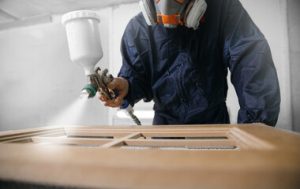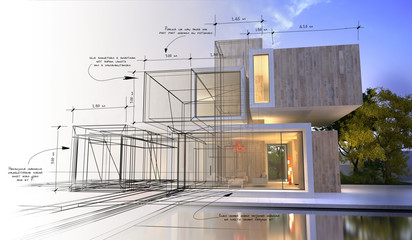Excavation is a critical phase in virtually every construction and land development project. Whether preparing a residential site for foundation work or shaping large commercial landscapes, Lazer Companies excavation services play an essential role in ensuring stability, precision, and safety. These services require specialized equipment, skilled operators, and a deep understanding of soil conditions, site planning, and engineering standards.
What Are Excavation Services?

Excavation services involve the controlled removal and movement of earth, rock, or other materials to prepare land for construction or landscaping. The process typically includes digging, trenching, grading, and soil compaction, all performed to create a stable foundation for buildings, roads, utilities, and other infrastructure.
Professional excavation contractors use advanced equipment such as excavators, bulldozers, loaders, backhoes, and dump trucks. Their work requires not only technical expertise but also careful planning to ensure accuracy, efficiency, and compliance with environmental and safety standards.
Excavation is far more than simply digging; it’s a calculated engineering task that forms the groundwork for safe and durable construction.
Types of Excavation Services
Different types of excavation are used depending on the project’s purpose, soil conditions, and design specifications. Below are the most common categories:
1. Topsoil Excavation
This involves removing the uppermost layer of soil, which typically contains organic material, vegetation, and debris. Topsoil excavation prepares the ground for construction by exposing more stable layers beneath, ensuring a solid foundation for buildings or pavement.
2. Earth Excavation
Earth excavation goes deeper than topsoil removal, cutting into the underlying soil layers to reach the desired depth. This type of excavation is commonly used for foundations, basements, and roadbeds.
3. Rock Excavation
When construction sites encounter hard rock or compacted material, rock excavation is required. This process involves breaking and removing rock formations using specialized tools, drilling, or controlled blasting.
4. Muck Excavation
Muck refers to a mixture of soil and water that is too soft or unstable for construction. Excavation contractors remove or stabilize muck to create a firm base for building or road development.
5. Trench Excavation
Trench excavation creates narrow, deep cuts in the ground, often used for installing utility lines such as water, gas, electrical, or drainage systems. Proper trenching ensures safety and accessibility for underground installations.
6. Basement Excavation
This involves digging below ground level to create space for basements, underground parking, or storage areas. It requires precise engineering to prevent soil collapse and ensure structural integrity.
7. Dredging
Dredging is a form of excavation performed underwater, typically in rivers, lakes, or harbors, to remove sediment and maintain navigable waterways.
Each excavation type serves a specific function and requires distinct methods and equipment to achieve the desired results safely and efficiently.
The Excavation Process
Professional excavation services follow a structured process that ensures accuracy, safety, and compliance with engineering plans. Below are the general steps involved:
1. Site Assessment and Planning
Before any digging begins, contractors conduct a detailed site inspection to understand soil composition, slope, drainage, and underground utilities. This phase helps determine the appropriate equipment and techniques to use.
2. Design and Surveying
Surveyors and engineers collaborate to map out the excavation area, ensuring precise measurements and grading levels. This helps prevent errors and aligns the excavation with the project’s architectural or structural plans.
3. Clearing and Preparation
The site is cleared of debris, vegetation, and obstacles. Topsoil may be removed and set aside for later use in landscaping or restoration.
4. Excavation and Earthmoving
Using heavy machinery, operators begin the excavation according to specified depth and slope requirements. The excavated material is transported, stored, or disposed of according to environmental standards.
5. Grading and Leveling
Once excavation is complete, the site is graded to ensure proper slope, drainage, and elevation. This step is crucial for preventing future issues such as flooding or foundation instability.
6. Compaction and Stabilization
The soil is compacted to create a firm and stable surface capable of supporting structures or roads. Compaction reduces air pockets and increases soil density for improved strength.
7. Inspection and Finalization
Before proceeding with construction, the site undergoes inspection to confirm that all excavation work meets design and safety requirements.
This systematic approach ensures that excavation is carried out efficiently, safely, and in full compliance with project specifications.
Benefits of Professional Excavation Services
Hiring professional excavation contractors offers a range of advantages for property owners, developers, and builders.
1. Safety and Precision
Excavation involves working with heavy equipment and unstable ground. Professionals are trained to manage these risks safely and use advanced techniques to achieve precise depth, slope, and grading.
2. Efficiency and Time Savings
Experienced excavation teams can complete large-scale earthmoving tasks quickly using modern equipment and skilled coordination, minimizing delays in the construction timeline.
3. Structural Stability
Proper excavation lays the foundation for stable structures. Mistakes in depth, slope, or compaction can lead to foundation settling or water drainage problems, which professionals know how to prevent.
4. Compliance with Regulations
Professional excavators understand and follow building codes, zoning laws, and environmental regulations to ensure the project remains legally compliant.
5. Environmental Responsibility
Reputable excavation contractors prioritize eco-friendly practices such as erosion control, soil stabilization, and responsible waste management.
6. Cost-Effectiveness
Though hiring professionals may seem like an additional cost, it helps avoid expensive issues like soil erosion, drainage failures, and foundation problems later on.
Safety Practices in Excavation Work
Safety is paramount in excavation projects due to the inherent risks of working with heavy machinery and unstable ground. Accidents can occur from cave-ins, equipment malfunctions, or improper soil handling. Professional excavation contractors implement strict safety protocols to prevent such incidents.
Key safety practices include:
- Conducting soil stability tests before excavation begins.
- Installing protective systems like trench boxes and shoring to prevent cave-ins.
- Use proper signage and barriers to secure the site.
- Ensuring utility line detection to avoid damaging underground systems.
- Providing personal protective equipment (PPE) for workers.
- Maintaining regular equipment inspections and operator training.
- Monitoring weather conditions that can affect soil stability.
Adhering to these safety measures minimizes risk and ensures the well-being of workers and the surrounding environment.
Environmental Considerations in Excavation
Excavation affects the natural environment, making environmental management a crucial part of the process. Responsible contractors take steps to reduce ecological impact and protect surrounding ecosystems.
Common environmental considerations include:
- Erosion control: Using silt fences, sediment basins, and vegetation to prevent soil erosion.
- Proper waste disposal: Managing excavated materials according to environmental regulations.
- Water management: Ensuring proper drainage to prevent contamination or flooding.
- Recycling and reuse: Reusing topsoil and rock materials whenever possible.
- Minimizing noise and dust pollution: Employing dust suppression methods and noise control equipment.
Environmentally conscious excavation practices not only protect ecosystems but also help projects meet sustainability goals.
Applications of Excavation Services
Excavation is essential in a wide range of industries and construction projects. Some common applications include:
- Residential Construction: Preparing land for home foundations, driveways, septic systems, and landscaping.
- Commercial and Industrial Development: Site preparation for offices, warehouses, retail complexes, and factories.
- Road and Infrastructure Projects: Excavation for highways, bridges, tunnels, and drainage systems.
- Utility Installation: Creating trenches for electrical, plumbing, or telecommunications lines.
- Landscaping and Drainage Work: Grading and contouring land to improve water flow and aesthetics.
- Environmental Projects: Excavation for soil remediation, erosion control, and wetland restoration.
These applications demonstrate how excavation serves as the foundation for nearly every form of development and infrastructure.
Choosing the Right Excavation Contractor
Selecting a qualified excavation contractor is essential to the success of any construction project. Here are important factors to consider:
1. Experience and Expertise
Look for contractors with proven experience handling projects similar in scale and complexity to yours.
2. Licensing and Insurance
Ensure that the contractor holds proper licensing and insurance coverage to protect both parties in case of accidents or property damage.
3. Equipment and Technology
A reputable contractor should have access to modern, well-maintained machinery for efficient and accurate work.
4. Safety Record
Review the contractor’s safety history and compliance with safety standards.
5. Transparent Pricing
Reliable contractors provide clear and detailed cost estimates, preventing hidden fees or unexpected charges.
6. Environmental Responsibility
Contractors who prioritize sustainability practices demonstrate professionalism and long-term thinking.
7. Reputation and References
Check client testimonials and reviews to assess reliability, workmanship, and communication quality.
Choosing the right contractor ensures that your project proceeds smoothly, safely, and within budget.
Modern Trends in Excavation Technology
Technology continues to revolutionize the excavation industry, enhancing precision, safety, and efficiency. Some of the most significant trends include:
- GPS and Laser-Guided Equipment: These technologies allow for precise grading and excavation depth control.
- 3D Site Mapping: Advanced mapping systems help contractors visualize and plan excavation projects more accurately.
- Automation and Remote Operation: Autonomous machinery and remote-controlled equipment improve safety by keeping operators out of hazardous zones.
- Eco-Friendly Machinery: Modern excavators with lower emissions and better fuel efficiency reduce environmental impact.
- Data Integration: Real-time monitoring systems provide data on soil conditions, fuel usage, and productivity.
By embracing these innovations, excavation contractors can deliver higher-quality results while minimizing risks and waste.
The Role of Excavation in Construction Success
Excavation forms the foundation for every successful construction project. Without proper site preparation, even the best-designed structures can face long-term issues such as foundation settling, drainage failure, or soil erosion. Professional excavation ensures that the land is properly shaped, compacted, and ready to support safe and durable construction.
Moreover, accurate excavation facilitates efficient installation of underground utilities, ensures proper water drainage, and minimizes future maintenance needs. In many ways, it sets the stage for every subsequent phase of construction.
Professional excavation services are the backbone of any successful construction or development project. From small-scale residential foundations to large commercial sites, excavation ensures structural stability, environmental responsibility, and project efficiency.
By hiring qualified contractors, property owners and developers can rest assured that their land preparation is handled with precision, safety, and compliance in mind. Modern excavation goes beyond digging—it’s a strategic process that combines engineering expertise, advanced equipment, and sustainable practices.
Whether you’re developing a new property, installing utilities, or reshaping terrain, professional excavation services provide the groundwork for success. With the right expertise and planning, every project begins on solid ground—literally and structurally.

